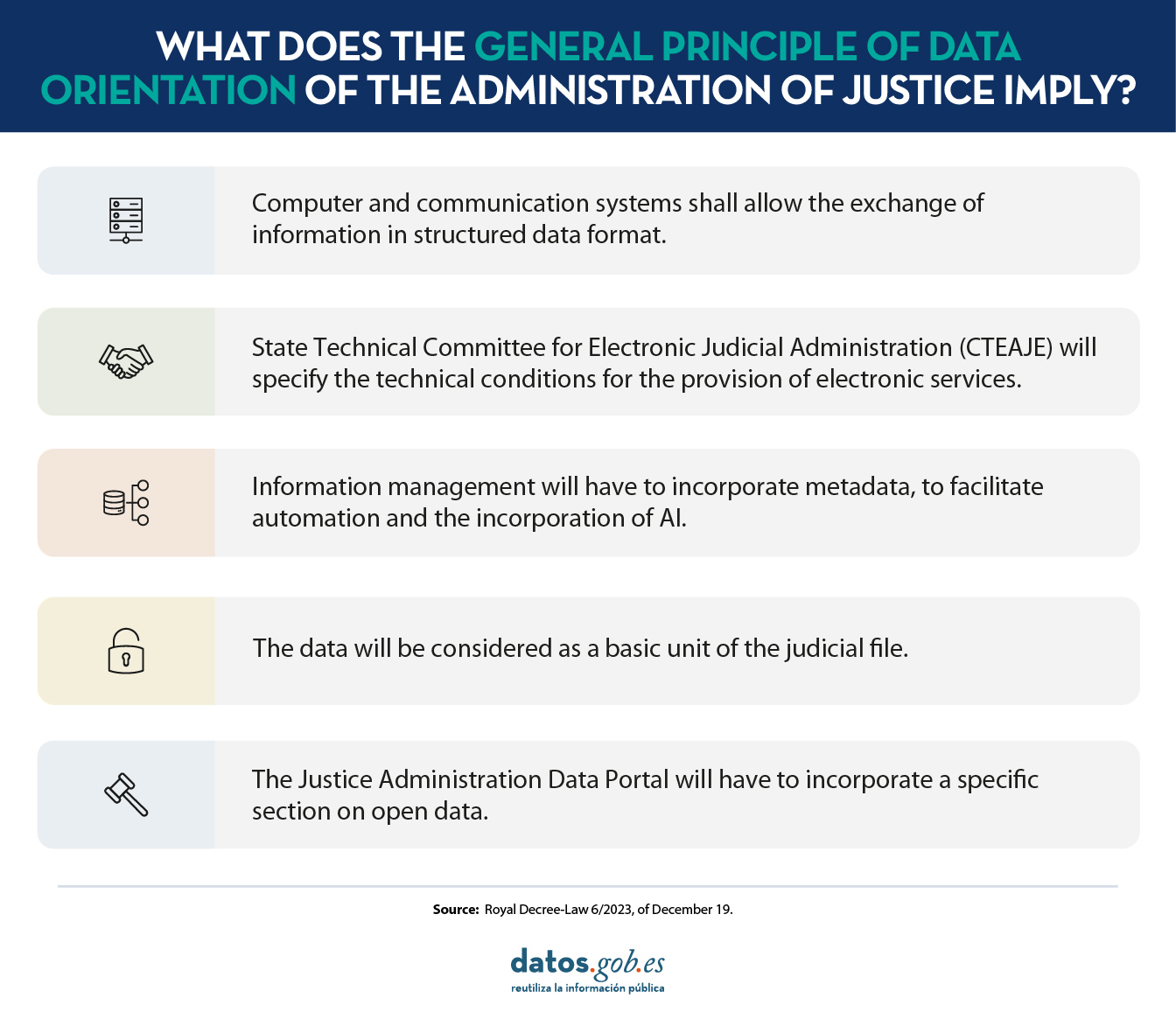
The process of technological modernisation in the Administration of Justice in Spain began, to a large extent, in 2011. That year, the first regulation specifically aimed at promoting the use of information and communication technologies was approved. The aim of this regulation was to establish the conditions for recognising the validity of the use of electronic means in judicial proceedings and, above all, to provide legal certainty for procedural processing and acts of communication, including the filing of pleadings and the receipt of notifications of decisions. In this sense, the legislation established a basic legal status for those dealing with the administration of justice, especially for professionals. Likewise, the Internet presence of the Administration of Justice was given legal status, mainly with the appearance of electronic offices and access points, expressly admitting the possibility that the proceedings could be carried out in an automated manner.
However, as with the 2015 legal regulation of the common administrative procedure and the legal regime of the public sector, the management model it was inspired by was substantially oriented towards the generation, preservation and archiving of documents and records. Although a timid consideration of data was already apparent, it was largely too general in the scope of the regulation, as it was limited to recognising and ensuring security, interoperability and confidentiality.
In this context, the approval of Royal Decree-Law 6/2023 of 19 December has been a very important milestone in this process, as it incorporates important measures that aim to go beyond mere technological modernisation. Among other issues, it seeks to lay the foundations for an effective digital transformation in this area.
Towards a data-driven management orientation
Although this new regulatory framework largely consolidates and updates the previous regulation, it is an important step forward in facilitating the digital transformation as it establishes some essential premises without which it would be impossible to achieve this objective. Specifically, as stated in the Explanatory Memorandum:
From the understanding of the capital importance of data in a contemporary digital society, a clear and decisive commitment is made to its rational use in order to achieve evidence and certainty at the service of the planning and elaboration of strategies that contribute to a better and more effective public policy of Justice. [...] These data will not only benefit the Administration itself, but all citizens through the incorporation of the concept of "open data" in the Administration of Justice. This same data orientation will facilitate so-called automated, assisted and proactive actions.
In this sense, a general principle of data orientation is expressly recognised, thus overcoming the restrictions of a document- and file-based electronic management model as it has existed until now. This is intended not only to achieve objectives of improving procedural processing but also to facilitate its use for other purposes such as the development of dashboards, the generation of automated, assisted and proactive actions, the use of artificial intelligence systems and its publication in open data portals.
How has this principle been put into practice?
The main novelties of this regulatory framework from the perspective of the data orientation principle are the following:
- As a general rule, IT and communication systems shall allow for the exchange of information in structured data format, facilitating their automation and integration into the judicial file. To this end, the implementation of a data interoperability platform is envisaged, which will have to be compatible with the Data Intermediation Platform of the General State Administration.
- Data interoperability between judicial and prosecutorial bodies and data portals are set up as e-services of the administration of justice. The specific technical conditions for the provision of such services are to be defined through the State Technical Committee for e-Judicial Administration (CTEAJE).
- In order, among other objectives, to facilitate the promotion of artificial intelligence, the implementation of automated, assisted and proactive activities, as well as the publication of information in open data portals, a requirement is established for all information and communication systems to ensure that the management of information incorporate metadata and is based on common and interoperable data models. With regard to communications in particular, data orientation is also reflected in the electronic channels used for communications.
- In contrast to the common administrative procedure, the legal definition of court file incorporates an explicit reference to data as one of the basic units of the common administrative procedure.
- A specific regulation is included for the so-called Justice Administration Data Portal, so that the current data access tool in this area is legally enshrined for the first time. Specifically, in addition to establishing certain minimum contents and assigning competences to various bodies, it envisages the creation of a specific section on open data, as well as a mandate to the competent administrations to make them automatically processable and interoperable with the state open data portal. In this respect, the general regulations already existing for the rest of the public sector are declared applicable, without prejudice to the singularities that may be specifically contemplated in the procedural regulations.

In short, the new regulation is an important step in articulating the process of digital transformation of the Administration of Justice based on a data-driven management model. However, the unique competencies and organisational characteristics of this area require a unique governance model. For this reason, a specific institutional framework for cooperation has been envisaged, the effective functioning of which is essential for the implementation of the legal provisions and, ultimately, for addressing the challenges, difficulties and opportunities posed by open data and the re-use of public sector information in the judicial area. These are challenges that need to be tackled decisively so that the technological modernisation of the Justice Administration facilitates its effective digital transformation.
Content prepared by Julián Valero, Professor at the University of Murcia and Coordinator of the Research Group "Innovation, Law and Technology" (iDerTec). The contents and points of view reflected in this publication are the sole responsibility of its author.


